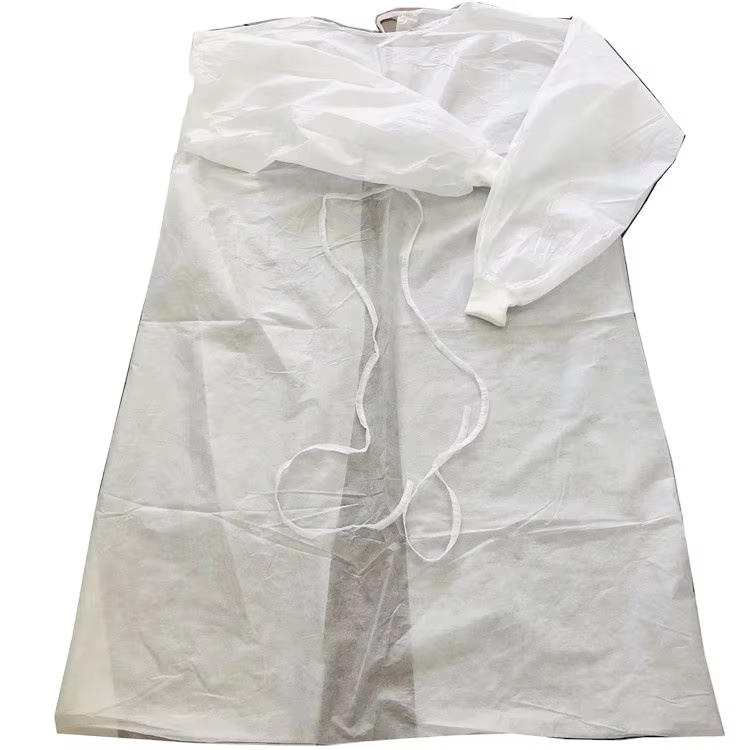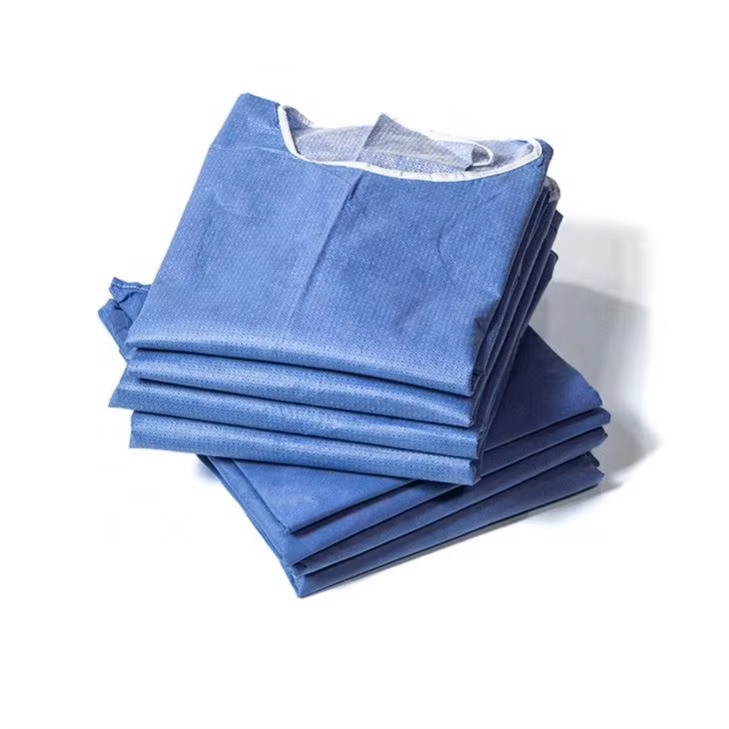Contact Info
200 meters east of Xihuang Village Committee, Linchi Town, Zouping City, Binzhou City, Shandong Province (China)
Disposable gowns serve as a key component in infection control as it offers a first line of defense barrier between healthcare workers and dangerous pathogens. When attending to patients suffering from medically infectious diseases such as the flu, COVID-19 or bacterial infections, caregivers run the risk of getting splashed with liquids such as saliva, blood or mucus. Well-made disposable gowns cover the torso, arms and even the thighs which protects the wearer from these pathogens from getting onto the clothes. While reusable cloth gowns are more likely to have small openings after cleaning, disposable gowns are made with fully sealed seams which protects from pathogen penetration. A clear example is a nurse dressing a wound in a disposable gown as it will protect the uniform from blood and pus, thus protecting the nurse and preventing the spread of pathogenic infection. This form of PPE is essential to the healthcare worker’s safety as well as infection control during patient care.
In busy medical environments such as clinics and hospitals, disposable gowns are essential to infection control as they prevent the spread of infections, a major risk in these environments. Even after a reusable gown is cleaned, there may be lingering pathogens that are transferred when the gown is used on a different patient.

Unlike reusable gowns, disposable gowns are worn once and thrown away as patients are each given a fresh gown. This also ensures no cross-contamination occurs. For instance, a doctor visiting a patient who has a drug resistant infection can wear a disposable gown, take it off and put on a new one before visiting the next patient. This ensures that no pathogens are carried between patients, especially the elderly and the immunocompromised. Stopping cross-infection can be complex but disposable gowns make it simple and reliable.
Disposable gowns are made for easy and quick use to promote and ensure consistent infection control, especially in a fast paced environment. Most of the time, staff in the healthcare sector are working under tight time constraints. This means they work best with PPE that can be put on and off without intricate time wasting procedures. Disposable gowns contain tie-back closures and elastic cuffs, which means they can be worn in 30 seconds or less. Quite the contrast to reusable gowns which need folding and sorting before they can be washed. When disposable gowns are used, they can simply be thrown into medical waste containers.
An example of this ease of use would be an emergency room paramedic handling a critical trauma case. When they quickly put on a disposable gown, they don’t have to worry about skipping over this vital step of infection control. The fact that it is so easy to don a gown means that infection control is a consistent practice rather than just an afterthought.
Hygiene control is about infection control, so it is important to be consistent with standard protocols. Quality disposable gowns are produced by reputable brands like MePro Medical. They use sterile, non-toxic, protective materials which have gone through tests for resistance against bacteria and viruses. Quality control is rigid with disposable gowns, and it even goes to lint, where it will not have any loose threads, and it will not have any of the defects that may harbor pathogens. Disposable gowns are a much better choice than reusable gowns that lose hygiene over time with washing and high temperature disinfection. Infection control is a priority for medical facilities and it is a guarantee that the disposable gown is sterile when the package is opened.

Disposable gowns indirectly support better infection control by alleviating the burden of cleaning and disinfection.
Reusable gowns need special washing using high temperatures, disinfecting chemicals, and careful drying to safely kill pathogens. This takes plenty of time to wash and can be very expensive, and human error is a risk (e.g., the washing cycle was too short to properly disinfect). With disposable gowns, this is also a non-issue—after use, they simply get tossed as medical waste. This saves time and resources. For instance, a small clinic using disposable gowns does not need to acquire industrial washers or additional laundry staff. This extra time and staff effort can be redirected to other items on the infection control checklist, such as equipment sanitization or staff training on PPE. In busy medical settings, every ounce of time or resources saved strengthens the infection control program as a whole.
Disposable gowns also serve an important role in the protection of high-risk and vulnerable populations, including newborns, cancer patients, and patients in ICUs. The individuals in these groups have weak or underdeveloped immune systems and can get sick when exposed to even small amounts of pathogens. Healthcare personnel using disposable gowns ensures pathogens are not transported in on their clothing.
Consider a scenario where a nurse uses a disposable gown while feeding a premmy in the NICU. This means she will not transfer any germs from other patients to that delicate baby. Without these disposable gowns, patients in these more sensitive situations would face a tremendously higher risk of acquiring severe infections like pneumonia or sepsis. Preventing infections in these populations is fundamental, and disposable gowns are a very effective way of doing this.